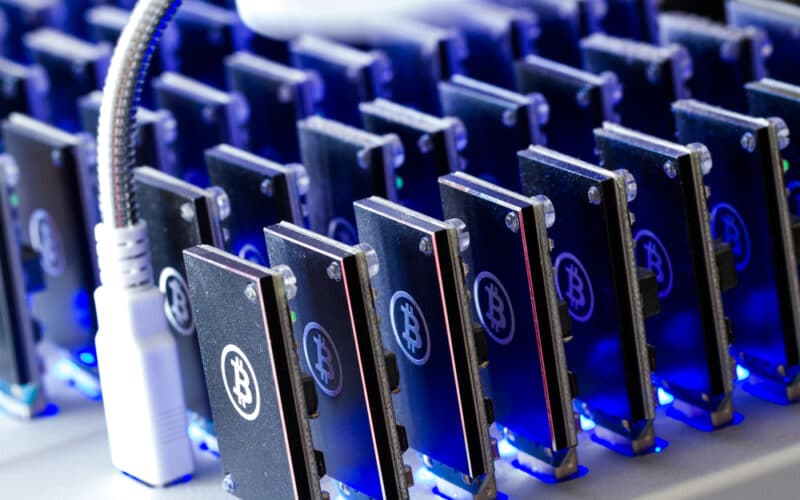Over the past few months, two major events significantly brought down the price of Bitcoin. The first was Elon Musk’s tweet announcing that Tesla would no longer be accepting payments in BTC. You might recall that it was Elon Musk’s earlier tweet announcing Tesla’s acceptance of BTC as payment that had catapulted BTC to all-time highs. So, when Musk reversed his decision in a matter of weeks, it was very natural that Bitcoin would come crashing down.
As can be seen below, from mid to late April, Bitcoin fell from around $60k to $50k in a reaction to Musk’s tweet. But you will also notice that the oldest crypto token staged a smart recovery and was on the verge of regaining the $60k levels. Here is when the second fall in BTC began around mid-May.
As you can see from the graph below, this fall was much sharper and dragged BTC down to sub-40k levels for the first time since early March.

The reason for this fall was not evident at first. But as reports from the east started to trickle through, it came to the fore that China was undertaking a strict takedown of crypto miners. This is a little confusing because China already had laws in place for several years restricting crypto mining activity. Then why was its impact suddenly being felt now?
China’s crypto steamroller
To understand this, one must first know that even though China has many laws in place, it chooses to enforce them at its will. So even though there were laws in place restricting mining activity, a significant chunk of the world’s crypto mining was still taking place in China. So why is China suddenly choosing to enforce these laws?
Crypto mining activities consume a lot of power in the form of electricity. In fact, it was this energy consumption concern that triggered Elon Musk to renounce BTC payments. Certain geographical regions in China offer round-the-clock electricity and are electricity surplus regions. So, these areas were highly attractive to miners who set up their rigs there and started large-scale mining operations. However, the higher consumption started taking its toll.
In April 2021, an internal investigation revealed that 21 coal miners trapped in Xinjiang had only entered the facility after it was restarted without official permission to help meet demand from crypto miners in the area.
There were also reports alluding to the disproportionate use of electricity to operate these massive mining rigs. Coal plants were thriving once again thanks to new demand from a burgeoning industry, and Chinese ambitions to “go green” were in direct conflict with these new developments.
So the Chinese Vice Premier Liu He officially announced a ban on crypto mining activities. Soon the effects were felt on the ground as several mining setups were shut down. There was also a clear drop in the hash rate which was noticed across the globe.
Hash rate approximates the overall compute power of the decentralized network, which in turn dictates the network’s ability to process transactions. So, it was quite clear that several mining operations were closed permanently and that severely dented the network’s credibility.
This also explains the rather steep drop in Bitcoin’s price, a fall of nearly $30,000, the largest fall in the cryptocurrency’s history. BTC also temporarily dropped below the $30k level, which is widely believed as a major support level. This sparked fears of a breakdown below the support level. Fortunately, these fears did not materialize, and BTC recovered marginally as it currently trades at the $35,000 level.
So, this fall accurately captures the short-term impact of China’s harsh crackdown on mining which closed down a significant chunk of BTC’s global compute power. However, what does this tell us about the long term?
The crackdown has many positive takeaways
First of all, China’s crackdown is not the only crackdown in the world. Crypto miners have been driven out of many places, countries, and regions. On most occasions, this expulsion has been due to the power consumption liabilities of the miners. The miners are not new to this.
In fact, miners keep searching for a ‘power arbitrage’ – that is, regions where the power is cheap and accessible enough to make mining operations profitable. Miners are often migrating of their own volition when they find a cheaper or more convenient source of electricity.
Usually, these migrations have been on a small scale and were done in a piecewise manner as a result of which no major impact was felt on the network. However, since the mining community in China was quite large, the impact was equally drastic as well. The migration this time around might take some time since there is a significant amount of replacement to take place.
However, no matter how slowly it happens, it is inevitable. Miners will gradually set up their rigs at more convenient places and bring the network back to its pre-crackdown capacity.
Moreover, the recent crackdown has absolutely done nothing to change the inherent fundamentals of BTC. The fact that Bitcoin runs on a decentralized network that is not controlled by any individual or institution still remains true.
In fact, the ability of BTC to survive this crackdown has been clear evidence of its robustness and credibility. There were questions on the network’s decentralization, given the majority of the mining was happening from one single region – China. The crackdown will help in the geographic diversification of the miners allaying any fears of concentration.
Overall, this is likely to be a small blip in Bitcoin’s rather illustrious and exponential journey, which is likely to resume very soon.








